These fixtures are designed to work with universal testing machines to perform an assortment of peel, puncture, burst, and coefficient of friction tests.
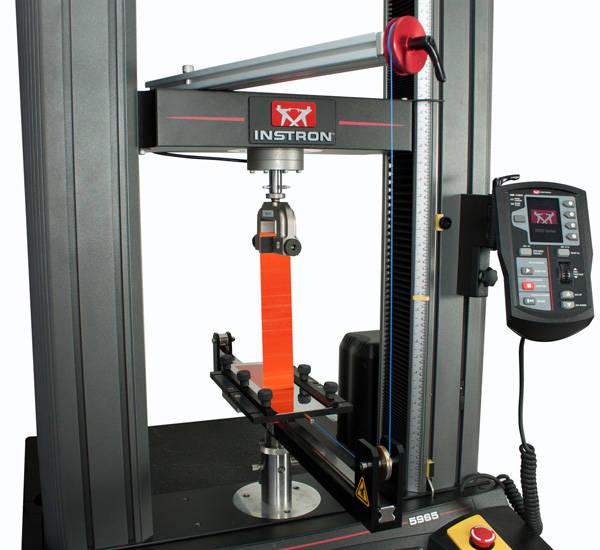
90° Angle Peel Fixture
The 90° peel test fixture consists of a bearing-mounted sled that is linked to the testing machine’s crosshead by a cable and pulley system. This fixture has a T-slotted sled that allows the substrate clamps, which secure the substrate to the sled, to adjust to a variety of substrate widths.
Overview
-
Catalog No. : 2820-035v
-
Associated Standards : ASTM B571, ASTM D2861
-
Peel Angle : 90°
-
Maximum Load : 1 kN
-
Maximum Substrate Width : 127 mm
-
Maximum Substrate Length : 250 mm
Popular

Variable Angle Peel Fixture
The variable angle peel test fixture consists of a bearing-mounted sled that is linked to the testing machine’s crosshead by a cable and pulley system. This fixture has a T-slot sled onto which you secure the substrate material. The T-slots allow the substrate clamps, which secure the substrate to the sled, to adjust to a variety of substrate widths.
Overview
-
Catalog No. : 2820-036
-
Associated Standards : ASTM B571, ASTM D429 (Method B), ASTM D2861, ASTM D3330 (Method F), ASTM D6252, ASTM D6862
-
Peel Angle : 30°, 45°, 60°, 90°, 130°, 150°
-
Maximum Load : 1 kN
-
Maximum Substrate Width : 130 mm
-
Maximum Substrate Length : 250 mm
Popular

Coefficient of Friction Fixture
This fixture consists of a fixed horizontal table and a moveable sled. Both the table and sled can be covered with the test material. A tow line attaches the sled to a low-force load cell with a pulley that guides the tow line during the test. The fixture is mounted to the base of the instrument and, as the crosshead/ load cell moves, the sled is pulled across the horizontal table. Data is recorded from the load cell during the test and analyzed to determine both static and kinetic friction. The static friction is derived from the first maximum peak (force) on the load curve and kinetic friction is derived from the average force between two pre-defined points. The coefficient of friction is defined as the recorded force divided by the mass of the sled.
Overview
-
Catalog No. : 2810-005
-
Associated Standards :ASTM D1894, ISO 8295:2004
Popular
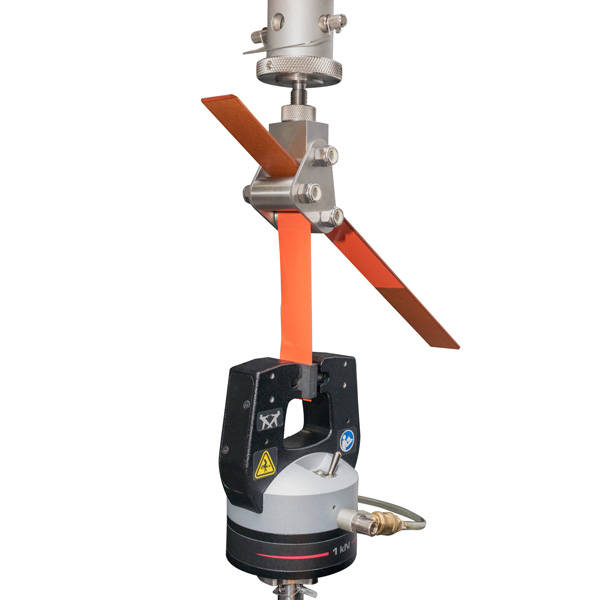
Floating Roller Peel Fixtures
The fixtures consist of two roller bearings in a frame that is connected to the test system via a pivoting adapter. This design ensures that alignment between the fixture and the test specimen occurs as soon as force is applied and that the direction of the applied force is through the centerline of the fixture. As the crosshead is driven in the tensile direction, the load weighing system measures the force required to peel the flexible adherend from the rigid adherend. There are two different versions of the fixture. One complies with the ASTM D3167 and the other with ISO 4578, EN 2243-2 and EN 1464 standards. While the standards are very similar there are slight differences in the specified peel area dimensions and the diameter of the roller bearings. While the differences are small, there is a risk of getting variation in the test results.
Overview
-
Catalog No. : 2820-101 2820-102
-
Associated Standards : ASTM D3167 ISO 4578, EN 1464, EN 2243-2
-
Maximum Load : 5 kN 5 kN
Popular
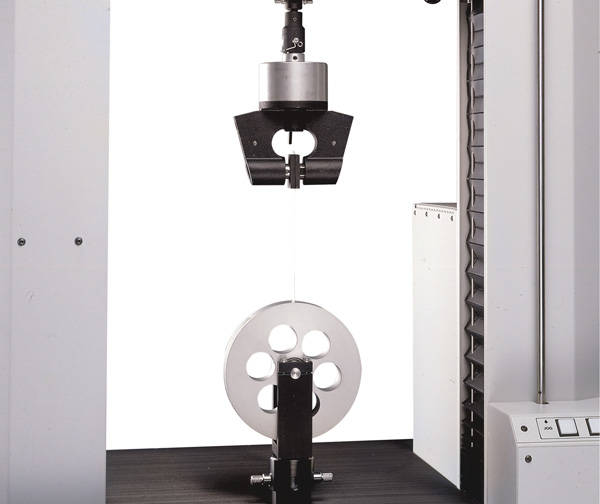
German Rotating Wheel Fixture
This fixture consists of a 152 mm diameter, 25.4 mm wide, bearing mounted wheel. As the crosshead is driven in the tensile direction, the load weighing system measures the force of the tape or release coating pulling against the wheel. The rotation of the wheel maintains a constant 90° peel angle.
Overview
-
Catalog No. : 2820-026
-
Associated Standards :ISO 6133, IPC-TM-650 2.4.9
-
Peel Angle : 90°
-
Maximum Load : 1 kN
Popular
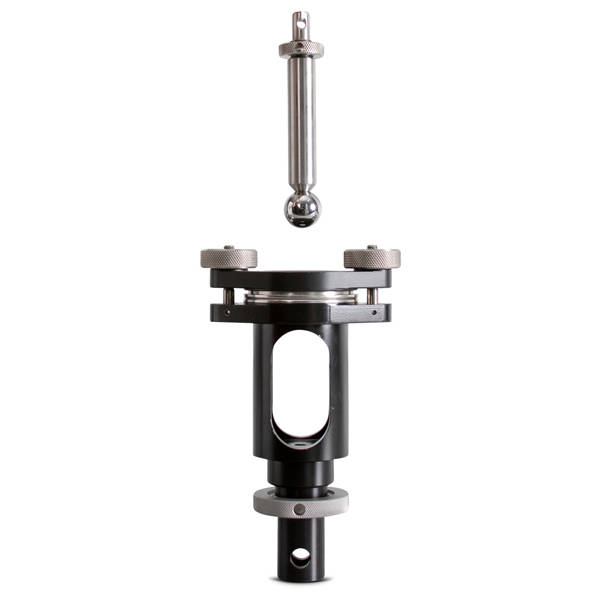
Ball Burst Compression Fixture
This fixture is comprised of a lower frame with a clamping mechanism that attaches to the base of the testing system, while a probe attaches to the load cell on the moving crosshead. The probe is then moved onto the specimen at a low rate of travel until failure occurs. Common results from these tests are maximum force, force at break, penetration distance, and energy to break.
Overview
-
Catalog No. : 2810-195
-
Associated Standards : ASTM D3787, ASTM D6797, FED 191A
-
Maximum Load : 10 kN
Popular
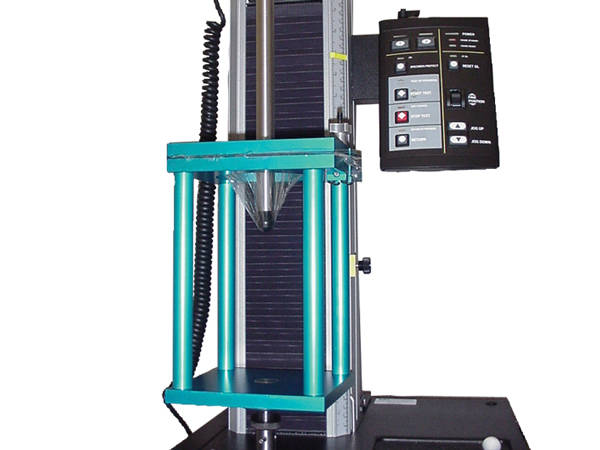
Puncture Fixture per ASTM D5748-95, D4649
This fixture is comprised of a lower frame with a clamping mechanism that attaches to the base of the testing system, while a probe attaches to the load cell on the moving crosshead. The probe is then moved onto the specimen at a low rate of travel until failure occurs. Common results from these tests are maximum force, force at break, penetration distance, and energy to break.
Overview
-
Catalog No. : 2810-501
-
Associated Standards : ASTM D5748-95, ASTM D4649
-
Maximum Load : 4.4 kN
Popular
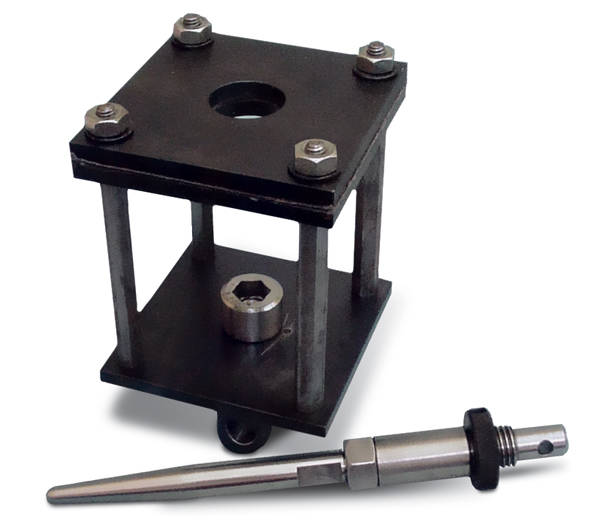
Puncture Fixture for Packaging Materials
This fixture is comprised of a lower frame with a clamping mechanism that attaches to the base of the testing system, while a probe attaches to the load cell on the moving crosshead. The probe is then moved onto the specimen at a low rate of travel until failure occurs. Common results from these tests are maximum force, force at break, penetration distance, and energy to break.
Overview
-
Catalog No. : S1-11855
-
Associated Standards : MIL-STD-3010
-
Maximum Load : 2.5 kN
Popular
